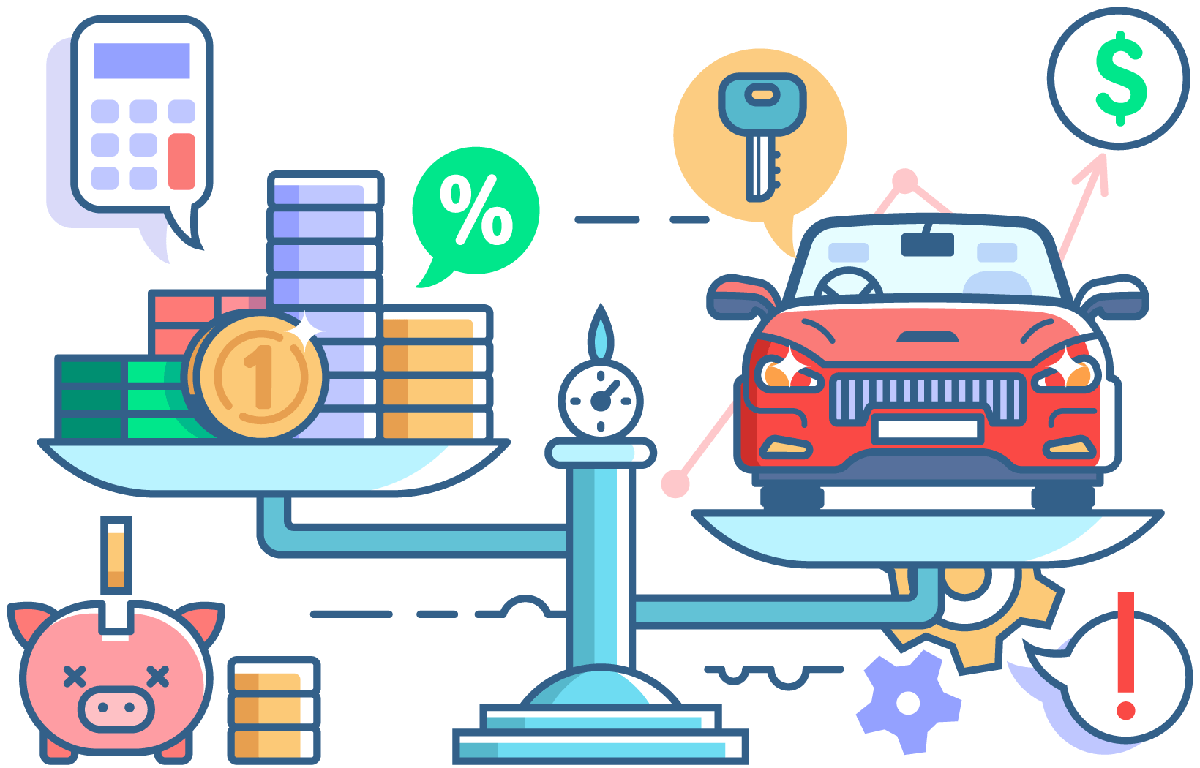Compare Auto Loan Terms And View Lending + Savings Rates
Choosing the Ideal Auto Loan Term

Buying a new vehicle is exciting, but paying for the vehicle can be another story. For those who don't have the cash to pay for the full cost of the vehicle upfront, getting an auto loan is necessary. Here are some tips for choosing the ideal auto loan term.
The Basics
An auto loan allows a consumer to borrow money to pay for a car. The money borrowed from a lender is called the loan principle. Because lenders need a financial incentive for the transaction, they charge interest.
When the consumer takes out the loan, a specific interest rate will be charged in addition to the original loan amount. The principal plus interest is typically due in monthly installments through the entire life of the loan.
Until the vehicle is completely paid off, the lender owns the vehicle, though the borrower is responsible for it. If the borrower misses loan payments, the lender will repossess the car. Once the loan is paid off, the vehicle's title is transferred to the borrower.
New or Used
Auto loan rates for new vehicles are generally better than rates for used cars. In most circumstances, the older the vehicle, the higher the rate. While dealerships sometimes offer zero percent financing for pre-owned stock, usually only new cars qualify for this low rate.
Term Length
Consumers would be wise to sign up for the shortest affordable term, as longer terms can cause consumers to owe more money over the term of the loan than the vehicle is worth. The average term for a loan on a new car is almost 64 months
Know Your Credit
Auto loans are largely effected by credit scores, so it's important for consumers to be aware of their credit score before applying for an auto loan. All U.S. citizens are eligible for a free credit report, which allows them to fix errors and correct bad habits.
Consumers who tend to pay bills late will have a lower credit score, and will often be seen as a risk to lenders, who are assessing whether the loan will be repaid.
Consumers with a less established credit history, particularly young people, may also be charged a higher loan rate as lenders may have difficulty judging how high a risk they are.
Know Your Price Range
Consumers who set a price range before shopping for a new vehicle are less likely to spend over their budget. Online calculators allow consumers to calculate monthly payments to ensure the loan will be affordable. Consumers should spend no more than 20 percent of take-home pay on all household vehicles combined. The 20 percent includes the down payment, principle and interest. Also take into account the costs of fuel, maintenance, repairs, as well as the taxes and fees to register the vehicle with the state.
Depreciation

The decline in a vehicle's value of the course of its life is called depreciation. According to Edmunds, a vehicle depreciates 11 percent the moment it is driven off the lot. The vehicle than depreciates an additional 15 to 25 percent a year. How quickly a vehicle depreciates is determined by mileage, certain extra features and vehicle make.
Replacement
According to AutoMD.com, more Americans are keeping their vehicles longer.
| Years the Plan to Keep their Car | Percent of Car Owners |
|---|---|
| 3 to 5 years | 3% |
| 6 to 7 years | 4% |
| 8 to 10 years | 15% |
| more than 10 years | 78% |
Whether it is the result of a down economy, the improvement of vehicles' longevity or a culture that has turned toward social networking over face-to-face contact, owners are keeping their vehicles for longer. When choosing an auto loan term, consumers should consider how long they plan to own the vehicle, keeping in mind factors such as starting a new family or retiring.
Look at the Total Cost of Interest
A low down payment might seem like a great deal at first, but it could mean more money paid over the loan's term. If not careful, consumers could easily end up “upside-down” on the car, where more money is owed on the car than the car is worth. A loan amortization calculator will show how much will be spent on interest and what will be owed throughout the life of the loan.
Insurance
Having disability and life insurance could potentially save money on an auto loan. Some lenders like to know they will be repaid in the event something happens to the borrower.Don't Settle
Consumers do not have to go through the dealership to get a loan for their vehicle. Often dealerships do not offer the best rates. Credit unions, banks and online lenders also offer auto loans, and shopping around may turn up a better deal, or provide bargaining power when working with the dealership.
It is best to arrive at the dealership with an approved loan application from another source, so they can know if they are being offered a good financing deal.
Loan applications request income, expenses, debts and employment history. Consumers should be honest in filling out the applications, as all information will be verified and misleading or false information can get the applicant in trouble.
Watch out for Prepayment Penalties
Consumers should read the loan's fine print to be sure they won't be penalized for making extra payments or paying off the entire loan early. Even if it's doubtful the loan will be paid off early, circumstances can change down the road, and what may not be an option at the time of the loan may become possible later.
Facing Rejection
Rather than reapplying for a loan after an application has been rejected, consumers should determine the cause of the rejection to try to remedy the problem. Because lenders primarily look at credit scores for approving loans, consumers should take steps to improve their credit scores before reapplying for an auto loan.
Car Financing Example
Ford F150
Ford once offered a Ford F150 truck for either zero percent financing for up to 60 months or a $3,545 cash rebate. Consumers who do their homework will be able to spot the best deal. Here is a cost breakdown based on a $24,000 model.
Zero Percent Financing
- Amount Financed: $22,000
- Monthly Payments: $366.67
- Interest Paid: $0
- Total Payments: $22,000
Cash Rebate
- Amount Financed: $22,000-$3,545=$18,455
- Monthly Payments: $356.79
- Interest Paid (6%): $2,952.21
- Total Payments: $21,407.21
Number crunching shows that the cash rebate is the better deal over time. By doing a little bit of homework before purchasing a vehicle, consumers can save hundreds, if not thousands of dollars, over the course of an auto loan.
